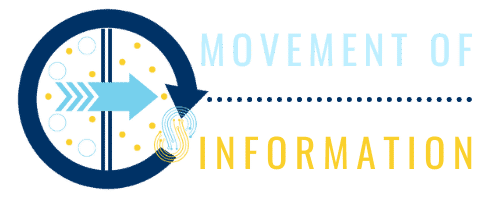When addressing the complexities of education staffing, you must consider the challenges schools face in securing qualified staff. Tailored solutions provide a way forward, offering a unique approach to staffing needs.

The impact of quality staffing reverberates throughout the entire educational system, shaping the future of students and institutions alike. As new technologies emerge to streamline the staffing process, the landscape of education staffing continues to evolve.
Partnering with the right agencies can be the key to achieving excellence in education staffing solutions.
Addressing Education Staffing Challenges
To effectively tackle the persistent challenges in education staffing, strategic planning and proactive measures are essential for long-term success. Teacher retention and substitute shortage are two critical issues facing schools today. Retaining quality teachers is paramount in ensuring a stable and high-performing educational environment. Implementing programs that support professional development, work-life balance, and recognition can significantly impact teacher retention rates.
Moreover, the substitute shortage poses a significant obstacle to the continuity of education. Schools must develop strategies to attract and retain substitute teachers to fill in when regular teachers are unavailable. Offering competitive pay, training opportunities, and creating a positive work environment for substitutes can help address this shortage effectively.
Tailored Solutions for Schools
Addressing the persistent challenges in education staffing requires tailored solutions that cater to the specific needs and circumstances of individual schools. To effectively navigate these challenges, schools must seek customized approaches and specialized services that align with their unique requirements. Tailored solutions encompass a deep understanding of a school’s culture, student demographics, academic programs, and staffing gaps. By leveraging these insights, education staffing providers can offer personalized strategies that address the precise areas where support is needed most.
Customized approaches involve conducting thorough assessments to identify key areas for improvement. This may include analyzing teacher-student ratios, subject-specific demands, or even cultural considerations within the school environment. Specialized services then come into play by offering targeted solutions such as recruiting teachers with expertise in certain subjects, providing professional development tailored to the school’s curriculum, or implementing mentorship programs to support new educators.
The Impact of Quality Staffing
Quality staffing in education can significantly influence the overall effectiveness and success of a school. Staffing efficiency plays a crucial role in ensuring that students receive the support and guidance they need to thrive academically. When schools have quality educators in place, it directly impacts student success and academic growth.
Having the right staff in key positions ensures that the educational environment is conducive to learning and development. Quality staffing not only benefits students but also contributes to the overall morale and productivity of the school staff. Effective educators who are passionate about their work can inspire students to reach their full potential, leading to improved academic outcomes.
Furthermore, quality staffing fosters a culture of collaboration and innovation within the school community. When educators are competent and dedicated to their roles, they can create a positive learning environment that encourages both personal and academic growth. Investing in quality staffing is an investment in the future success of the school and its students.
Innovative Staffing Technologies
Incorporating cutting-edge technology into education staffing processes can revolutionize recruitment and placement strategies, enhancing overall efficiency and effectiveness. By leveraging innovative staffing technologies, educational institutions can streamline processes and increase efficiency in sourcing, screening, and placing qualified staff. Automated applicant tracking systems can efficiently filter through a large pool of candidates, matching skills and experience to specific job requirements. This not only saves time but also ensures a more targeted selection process, leading to better placements.
Utilizing AI-driven algorithms can further enhance the efficiency of the staffing process by identifying suitable candidates based on predefined criteria, such as certifications, experience, and cultural fit. This targeted approach reduces the time spent on manual candidate evaluation, allowing education recruiters to focus on building relationships and ensuring the best candidate-job fit.
Innovative staffing technologies also enable real-time communication and collaboration, facilitating quicker decision-making and seamless coordination among stakeholders. By embracing these advancements, educational institutions can adapt to changing staffing needs more effectively, ultimately building a stronger and more resilient workforce.
Partnering for Educational Excellence
To elevate educational outcomes and foster institutional growth, strategic partnerships are essential for cultivating a culture of educational excellence. Collaborative partnerships between educational institutions and external organizations play a pivotal role in driving academic success. By forming alliances with businesses, nonprofits, and community stakeholders, educational institutions can leverage a diverse range of resources, expertise, and perspectives to enhance student learning experiences.
These partnerships can facilitate the exchange of best practices, innovative ideas, and cutting-edge technologies, ultimately enriching the educational landscape. By working together towards a common goal of academic success, institutions can better address the evolving needs of students and equip them with the skills required to thrive in a rapidly changing world. Moreover, collaborative partnerships can lead to the development of tailored programs, mentorship opportunities, and real-world learning experiences that prepare students for success beyond the classroom.
In essence, fostering collaborative partnerships isn’t just about building connections; it’s about creating a synergistic environment where collective efforts drive educational excellence and empower students to reach their full potential.
Conclusion
In conclusion, building futures through essential education staffing solutions is like planting seeds of knowledge in fertile soil. By addressing challenges with tailored solutions and innovative technologies, schools can cultivate a harvest of educational excellence.
The impact of quality staffing is like nourishing the roots of a tree, allowing it to grow strong and bear fruit for generations to come.
Partnering for educational excellence is the key to unlocking the potential of every student and shaping a brighter tomorrow.








